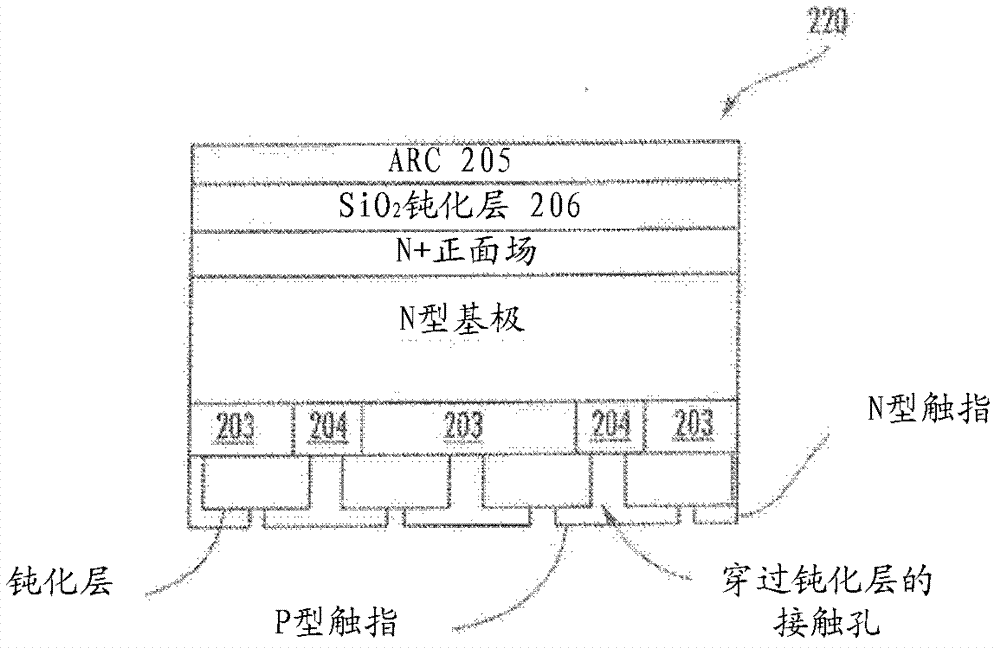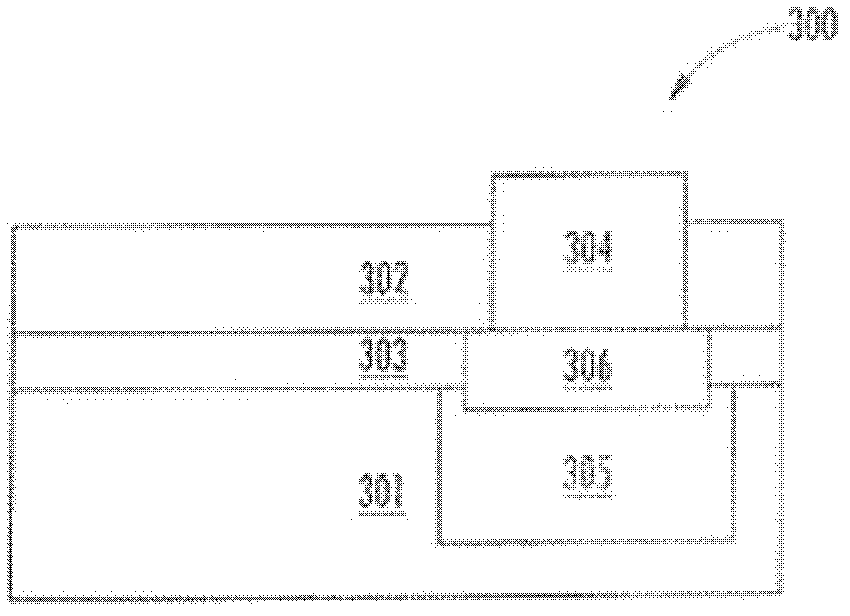Reducing surface recombination and enhancing light trapping in solar cells
A solar cell and top surface technology, applied in the field of dielectric materials, can solve the problems of reducing the UV collection efficiency of solar cells and non-optimal light capture
- Summary
- Abstract
- Description
- Claims
- Application Information
AI Technical Summary
Problems solved by technology
Method used
Image
Examples
Embodiment Construction
[0020] Hereinafter, embodiments of the system will be described in conjunction with solar cells. However, embodiments of the method may also be used with eg semiconductor substrates, image sensors or flat panels. Embodiments of this method may be used with, for example, beam-line type or plasma doping type ion implanters. Therefore, the present invention is not limited to the specific examples described below.
[0021] To improve the use of the oxide layer 206 with the ARC 205, optimized surface field effects allow minority carriers to leave the surface or away from the dielectric layer and enhance collection at the contacts. This prevents or reduces carrier recombination at the surface interface. Optimizing the oxide layer 206 and ARC 205 can enhance light capture. By reducing the thickness of dielectric layers such as oxide or nitride, the amount of UV light absorbed by these layers will be reduced. Embodiments of the methods described herein improve anti-reflection prop...
PUM
 Login to View More
Login to View More Abstract
Description
Claims
Application Information
 Login to View More
Login to View More - R&D
- Intellectual Property
- Life Sciences
- Materials
- Tech Scout
- Unparalleled Data Quality
- Higher Quality Content
- 60% Fewer Hallucinations
Browse by: Latest US Patents, China's latest patents, Technical Efficacy Thesaurus, Application Domain, Technology Topic, Popular Technical Reports.
© 2025 PatSnap. All rights reserved.Legal|Privacy policy|Modern Slavery Act Transparency Statement|Sitemap|About US| Contact US: help@patsnap.com



